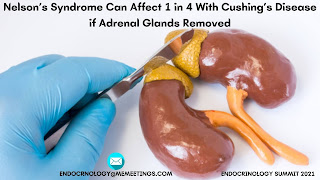Signs and Symptoms of HIV or AIDS
Acute HIV Infection: Intense HIV contamination, otherwise called
intense seroconversion or intense retroviral disorder (ARS), is the underlying
phase of the sickness following openness to the infection. It is the period
during which the body will begin delivering antibodies to battle the infection.
ARS goes on for around 14 days, yet the antibodies might be made for any
longer.
Despite the fact that a few group
will encounter manifestations during the intense period of
contamination—ordinarily portrayed as influenza like with swollen lymph hubs
and incidentally impulsive—ongoing investigations have recommended that as
numerous as 43% won't have any indications whatsoever.
The signs and manifestations of
ARS don't change among people. Be that as it may, the paces of seroconversion
contrast, wherein hetero men are half more averse to get contaminated per
sexual demonstration contrasted with hetero ladies (because of contrasts in
size and porosity of penile mucosal surfaces contrasted with those of the
vagina or rectum).
Among some of the symptoms commonly seen in men with an HIV/STD
co-infection:
Penis injuries: Syphilis creates in stages, the first includes the
presence of an easy, ulcerative sore (called a chancre) at the site of the
openness. In men, the penis, rectum, or mouth can be influenced. The break in
the skin permits HIV simpler access into the body to build up an infection.8
Agony and igniting with pee: This is a typical manifestation in men
with gonorrhea and chlamydia.
Testicular agony and expanding: This is another conceivable
indication of chlamydia and gonorrhea where the epididymis (the cylinder that
stores and transports sperm from the gonad) gets kindled. Orchitis (testicular
expanding) or potentially epididymitis (growing of the epididymis) can happen.
Torment with discharge: Also known as dysorgasmia, this is a side
effect of gonorrhea, chlamydia, or trichomoniasis in men.
Opportunistic Infections in Men
Instead of the intense phase of
contamination, the side effects of persistent HIV are fundamentally identified
with the improvement of OIs as opposed to the actual infection.
In people, the declaration of
these OIs stays pretty much something similar. At CD4 checks of somewhere in
the range of 250 and 500, normal OIs incorporate candidiasis (oral and vaginal
thrush), herpes simplex, herpes zoster (shingles), bacterial pneumonia,
bacterial and parasitic skin diseases, tuberculosis, and HIV-related
meningitis.
Persistent or intermittent penile ulcers: Chronic genital ulcers
(i.e., those going on for over one month) are signs of a seriously smothered
insusceptible reaction. In men with HIV, this can show with broad ulcers on the
penis, frequently brought about by herpes simplex infection type 2 (HSV-2).
Butt-centric ulcers: HSV-2 is exceptionally predominant in MSM with
HIV, for certain examinations recommending an energy pace of 80%. Butt-centric
ulcers, generally brought about by the transmission of HSV-2 during
butt-centric sex, is frequently the primary sign of HIV in MSM. Albeit normal
in MSM, these difficult ulcers can likewise influence any individual who
participates in butt-centric sex.
Rectal agony: Rectal irritation, otherwise called proctitis, is an
indication additionally usually connected to HSV-2 in HIV-positive MSM. As well
as causing torment, proctitis can show with butt-centric ulcers, rectal dying,
bodily fluid release, the runs, and tenesmus (an inclination that you need to
poop when your inside is unfilled).
AIDS:
The last phase of HIV
contamination is regularly alluded to as (AIDS). This is where the invulnerable
framework is supposed to be seriously undermined, expanding the danger of
conceivably perilous astute diseases.
By definition, an individual with
HIV is considered to have advanced to AIDS when:
The CD4 check dips under 200
cells/mm3
An individual gets one of 28
AIDS-characterizing conditions paying little heed to the CD4 check.




Comments
Post a Comment